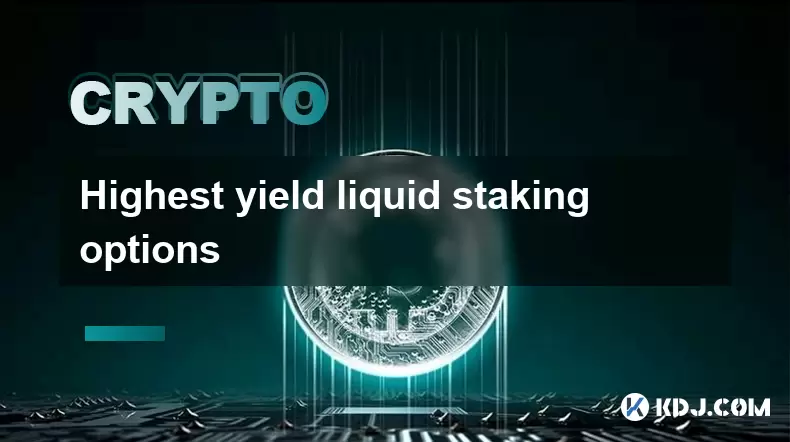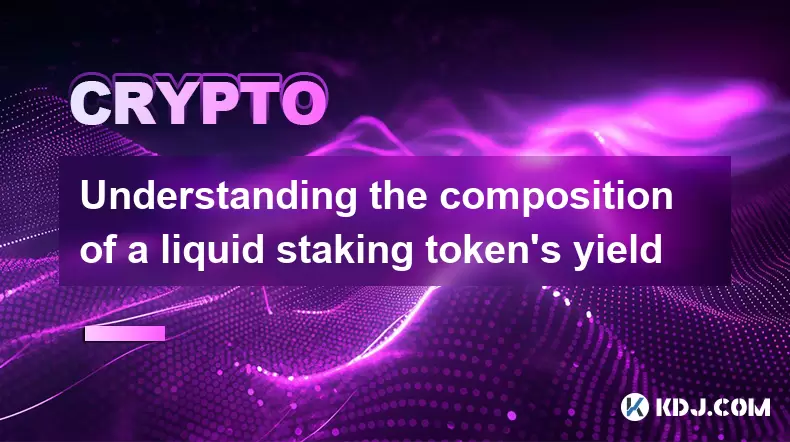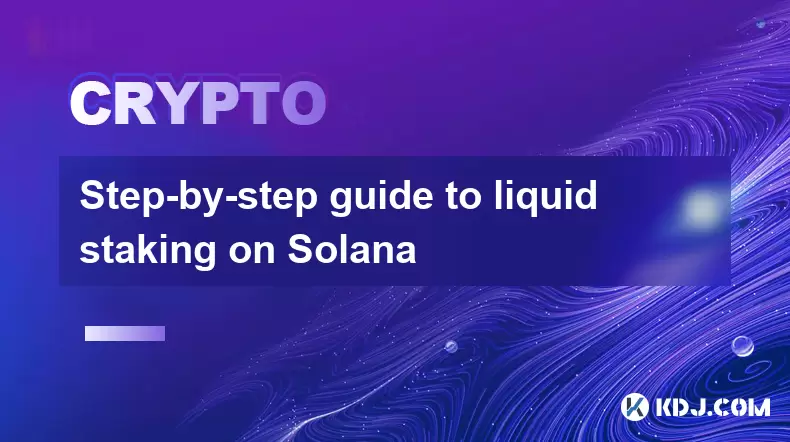-
 Bitcoin
Bitcoin $117400
-0.46% -
 Ethereum
Ethereum $3768
0.60% -
 XRP
XRP $3.551
2.09% -
 Tether USDt
Tether USDt $1.000
0.00% -
 Solana
Solana $203.2
11.30% -
 BNB
BNB $770.9
1.92% -
 USDC
USDC $0.9999
0.01% -
 Dogecoin
Dogecoin $0.2709
-0.02% -
 Cardano
Cardano $0.9024
4.49% -
 TRON
TRON $0.3139
0.60% -
 Hyperliquid
Hyperliquid $45.60
-1.41% -
 Stellar
Stellar $0.4730
-1.34% -
 Sui
Sui $4.025
2.15% -
 Chainlink
Chainlink $19.79
2.19% -
 Hedera
Hedera $0.2724
-2.39% -
 Avalanche
Avalanche $25.93
3.05% -
 Bitcoin Cash
Bitcoin Cash $524.0
-1.83% -
 Shiba Inu
Shiba Inu $0.00001558
0.50% -
 Litecoin
Litecoin $116.7
-0.30% -
 UNUS SED LEO
UNUS SED LEO $8.996
0.00% -
 Toncoin
Toncoin $3.334
1.83% -
 Polkadot
Polkadot $4.506
0.34% -
 Uniswap
Uniswap $10.99
4.83% -
 Ethena USDe
Ethena USDe $1.001
0.03% -
 Pepe
Pepe $0.00001461
3.17% -
 Monero
Monero $320.3
-1.01% -
 Bitget Token
Bitget Token $4.935
0.36% -
 Dai
Dai $0.9998
0.00% -
 Aave
Aave $322.4
-1.25% -
 Bittensor
Bittensor $455.6
9.33%
Highest yield liquid staking options
Liquid staking lets users earn rewards on staked crypto like ETH or SOL while maintaining liquidity through tokens like stETH or mSOL, which can be used in DeFi for added yield.
Jul 21, 2025 at 06:56 pm

What is Liquid Staking and Why Does It Matter?
Liquid staking has emerged as a popular solution in the cryptocurrency ecosystem, offering users the ability to stake their assets while retaining liquidity. Unlike traditional staking, where funds are locked up for a specific period, liquid staking platforms issue receipt tokens (such as stETH or stSOL) that represent the staked assets plus accrued rewards. These tokens can be traded, transferred, or used in DeFi protocols to generate additional yield.
This innovation allows users to avoid liquidity constraints while still participating in network validation and earning staking rewards. The concept is especially relevant for Proof-of-Stake (PoS) blockchains like Ethereum, Solana, and Cosmos, where validators play a crucial role in maintaining network security and decentralization.
Top Platforms Offering High-Yield Liquid Staking
Several platforms have positioned themselves as leaders in the liquid staking space by offering competitive yields and reliable infrastructure. Among them, Lido Finance, Rocket Pool, and StakeWise stand out in the Ethereum ecosystem, while Marinade Finance and Jito Network are prominent in the Solana domain.
- Lido Finance remains the most dominant liquid staking protocol for Ethereum, allowing users to stake ETH and receive stETH in return. Its integration with DeFi protocols and Layer 2 solutions enhances its utility and yield potential.
- Rocket Pool provides a decentralized alternative by enabling node operators to accept deposits from users, generating rETH tokens. Its high decentralization score and low minimum requirements make it attractive for both small and large stakers.
- StakeWise focuses on a permissionless and trustless staking model, allowing users to deposit ETH and receive osETH tokens that can be used across DeFi applications.
- Marinade Finance on Solana offers mSOL, a liquid staking token that can be used in various Solana-based DeFi apps, enhancing yield opportunities.
- Jito Network introduces JitoSOL, which combines liquid staking with MEV (Maximal Extractable Value) rewards, increasing the overall yield for stakers.
Comparing Yields and Risk Profiles
When evaluating liquid staking options, it's essential to compare annual percentage yields (APYs) and risk profiles across platforms. While APYs can vary based on network conditions, validator performance, and DeFi integrations, risk factors include smart contract vulnerabilities, slashing risks, and centralization concerns.
For example, Lido Finance typically offers 4–6% APY from staking alone, but when stETH is deposited into Curve Finance or Aave, users can earn an additional 2–5% depending on the liquidity pool incentives and borrowing demand.
Rocket Pool’s rETH can yield similar or higher returns due to its decentralized architecture, which reduces the risk of centralized failures. However, it may require more technical knowledge to optimize yields compared to Lido’s user-friendly interface.
StakeWise’s osETH is gaining traction due to its non-custodial nature, allowing users to benefit from rewards without relying on a centralized intermediary. Marinade Finance and Jito Network offer Solana stakers around 5–8% base APY, which can increase when mSOL or JitoSOL is used in yield farming or lending protocols.
How to Maximize Yield with Liquid Staking Tokens
To maximize yield, users should not only focus on the staking rewards but also on how to utilize their liquid staking tokens effectively. Here's a step-by-step approach:
- Deposit ETH or SOL into a liquid staking platform to receive stETH, rETH, osETH, mSOL, or JitoSOL.
- Provide liquidity on DEXs like Curve, Balancer, or Orca using these tokens paired with stablecoins or native assets.
- Supply the tokens to lending protocols such as Aave or Kamino to earn interest income while still holding the staked assets.
- Participate in yield farming programs that offer additional token incentives for liquidity providers.
- Reinvest rewards regularly to compound earnings over time.
Each step requires careful evaluation of gas costs, slippage, and impermanent loss risks. Users should also monitor protocol incentives and token emissions to ensure they're not overexposed to volatile or declining reward structures.
Security Considerations and Best Practices
Smart contract risk remains one of the most significant concerns in liquid staking. Since users deposit funds into a protocol and receive receipt tokens, any vulnerability in the underlying smart contracts could lead to loss of funds.
To mitigate these risks:
- Choose platforms with audited smart contracts and a proven track record.
- Diversify across multiple liquid staking protocols to avoid single points of failure.
- Use hardware wallets to store staking tokens and only connect to trusted interfaces.
- Monitor governance proposals and community discussions to stay informed about changes that could affect yields or security.
- Avoid over-leveraging when using liquid staking tokens in DeFi strategies, as liquidations can lead to significant losses.
Slashing risks, although minimal on Ethereum and Solana, should also be considered. If a validator misbehaves or goes offline, staked funds may be penalized. Decentralized platforms like Rocket Pool and StakeWise tend to offer better protection against such risks due to their distributed validator architecture.
Frequently Asked Questions
Q: Can I unstake my assets anytime with liquid staking?
Yes, in most cases, you can unstake or swap your liquid staking tokens at any time. However, unstaking may take time depending on the network’s withdrawal queue or unbonding period.
Q: Are liquid staking tokens pegged to the underlying asset?
Most liquid staking tokens, like stETH or mSOL, are soft pegged to the value of the underlying asset (ETH or SOL). Their price may fluctuate slightly due to market demand and DeFi incentives.
Q: How are liquid staking yields calculated?
Yields are determined by network inflation rates, validator performance, and DeFi incentives. Platforms distribute rewards in real-time or at intervals, which are reflected in the token exchange rate.
Q: Can I stake stablecoins with liquid staking tokens?
No, liquid staking applies to native blockchain assets like ETH or SOL. However, you can use stablecoins alongside liquid staking tokens in liquidity pools or lending platforms to earn additional yield.
Disclaimer:info@kdj.com
The information provided is not trading advice. kdj.com does not assume any responsibility for any investments made based on the information provided in this article. Cryptocurrencies are highly volatile and it is highly recommended that you invest with caution after thorough research!
If you believe that the content used on this website infringes your copyright, please contact us immediately (info@kdj.com) and we will delete it promptly.
- XRP, Bitcoin, Ripplecoin: Navigating the Crypto Landscape in 2025
- 2025-07-22 20:30:13
- Cardano Ecosystem Watch: Can PayFi Token Remittix Trigger an ADA Overtake?
- 2025-07-22 20:50:13
- JasmyCoin Price Forecast: Chart Analysis Points to Potential Surge
- 2025-07-22 20:55:13
- Remittix, XRP, and Dogecoin: What's Hot in the Crypto Game Right Now?
- 2025-07-22 20:10:14
- BlockchainFX, PEPE, and USDT: What's the Buzz in the Crypto Jungle?
- 2025-07-22 18:50:12
- Ripple's RLUSD: Institutional Backing Fuels Stablecoin Ascent
- 2025-07-22 18:30:12
Related knowledge

Understanding the composition of a liquid staking token's yield
Jul 20,2025 at 09:07am
What Is a Liquid Staking Token?A liquid staking token is a representative asset issued to users who stake their native cryptocurrency on a proof-of-st...

Is it better to stake directly or use a liquid staking service?
Jul 22,2025 at 08:21pm
Understanding the Basics of StakingStaking in the context of blockchain and cryptocurrency refers to the process of locking up digital assets to suppo...

What to do during an LST depeg event
Jul 20,2025 at 04:57pm
Understanding LST Depeg EventsAn LST (Liquid Staking Token) depeg event occurs when the token, which is typically pegged to the value of the underlyin...

Can you provide liquidity with liquid staking tokens?
Jul 22,2025 at 10:22am
Understanding Liquid Staking TokensLiquid staking tokens (LSTs) are derivative tokens that represent staked assets on a proof-of-stake (PoS) blockchai...

What are the best wallets for storing LSTs?
Jul 21,2025 at 03:14pm
Understanding LSTs and the Need for Secure StorageLSTs, or Liquid Staking Tokens, are derivative tokens representing staked assets on a blockchain. Wh...

Step-by-step guide to liquid staking on Solana
Jul 20,2025 at 06:42am
What is Liquid Staking on Solana?Liquid staking is a mechanism that allows users to stake their cryptocurrency while retaining liquidity through the i...

Understanding the composition of a liquid staking token's yield
Jul 20,2025 at 09:07am
What Is a Liquid Staking Token?A liquid staking token is a representative asset issued to users who stake their native cryptocurrency on a proof-of-st...

Is it better to stake directly or use a liquid staking service?
Jul 22,2025 at 08:21pm
Understanding the Basics of StakingStaking in the context of blockchain and cryptocurrency refers to the process of locking up digital assets to suppo...

What to do during an LST depeg event
Jul 20,2025 at 04:57pm
Understanding LST Depeg EventsAn LST (Liquid Staking Token) depeg event occurs when the token, which is typically pegged to the value of the underlyin...

Can you provide liquidity with liquid staking tokens?
Jul 22,2025 at 10:22am
Understanding Liquid Staking TokensLiquid staking tokens (LSTs) are derivative tokens that represent staked assets on a proof-of-stake (PoS) blockchai...

What are the best wallets for storing LSTs?
Jul 21,2025 at 03:14pm
Understanding LSTs and the Need for Secure StorageLSTs, or Liquid Staking Tokens, are derivative tokens representing staked assets on a blockchain. Wh...

Step-by-step guide to liquid staking on Solana
Jul 20,2025 at 06:42am
What is Liquid Staking on Solana?Liquid staking is a mechanism that allows users to stake their cryptocurrency while retaining liquidity through the i...
See all articles

























































































